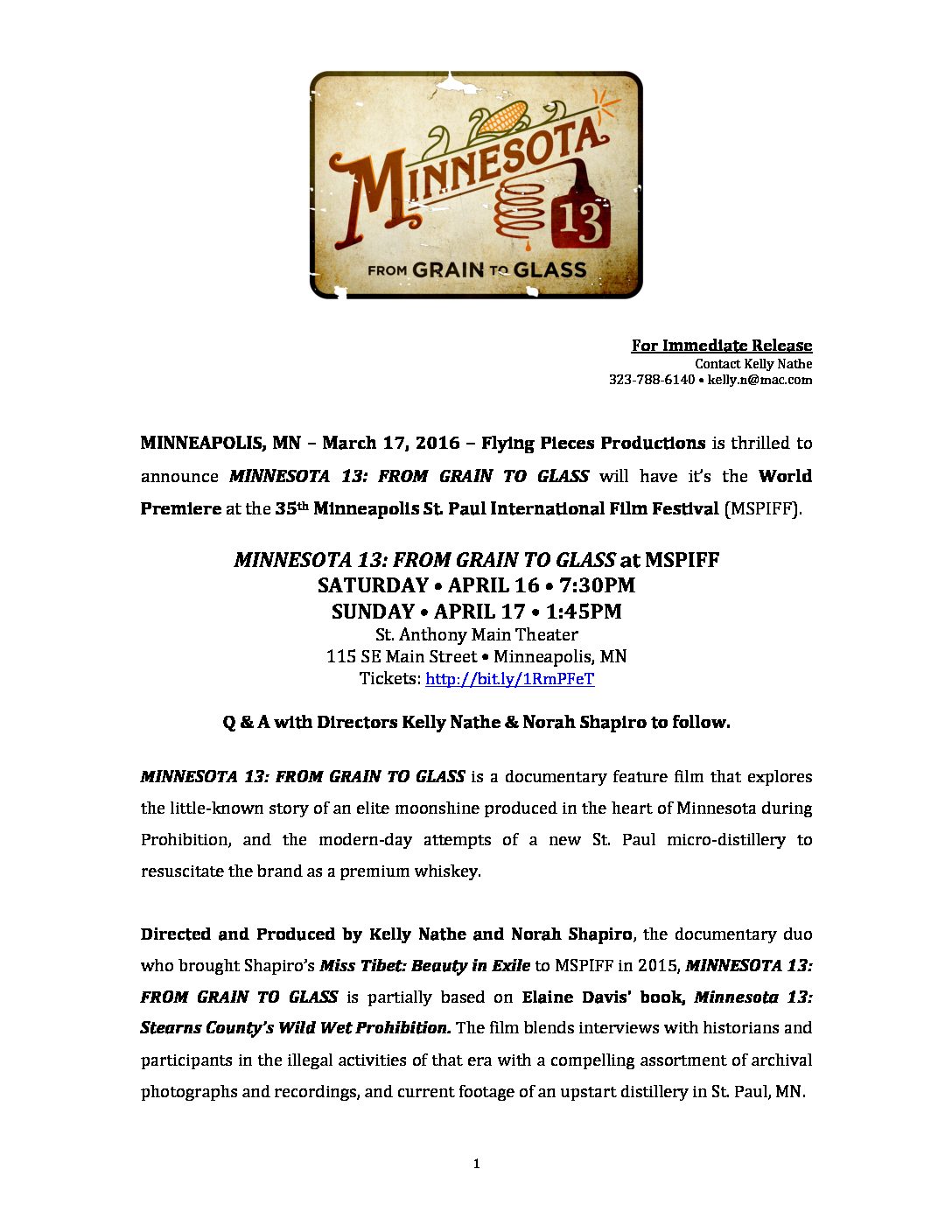Here’s a timely documentary that dovetails nicely with our discussion on community, faith and booze.
The Story
The story of the rise and fall Prohibition, which lasted from 1920-1933, has long been a popular topic in American culture. Minnesota 13 explores a little-known side of this story that played out in the Midwestern heartland: the creation and distribution of a popular premium moonshine from Stearns County, Minnesota that came to be known as “Minnesota 13.”
Widely regarded as the only branded moonshine of its day, by the peak of Prohibition Minnesota 13’s reputation and availability had spread throughout the country via various bootlegging networks. But the story of Minnesota 13 is not the typical Prohibition tale of gangsters and speakeasies, and Minnesota 13 was not the typical gut-burning moonshine of the day. Created by Catholic Church-going farmers, with the participation of nearly everyone in their communities from the priests and sheriffs on down, Minnesota 13 was a truly hand-crafted whiskey, often double-distilled and aged in oak barrels. And, it provided a finer-tasting and safer alternative to the ubiquitous bathtub gins and white lightening moonshines being produced elsewhere during the era.
Minnesota 13 moonshine was named after the open-pollinated corn seed developed by the University of Minnesota in the late 1800s to stand up to the region’s shorter growing season, which had hindered other corn varieties. After the end of the Great War in 1918, with the disappearance of agricultural subsidies, the price of corn plummeted, leaving Minnesota farmer’s sheds full of it. What these farmers needed was a new market for corn. And the perfect storm of Prohibition, their surplus corn crops, and their brewing culture and know-how offered it in the form of Moonshine. Farmers in Central Minnesota soon discovered they could earn far more by using their surplus of corn to make whiskey than for a cash crop or to feed their livestock.
These primarily German immigrants held firm to the beer drinking traditions brought with them from the Old Country. Notably, their local Catholic priests acknowledged that the making and selling of moonshine was by definition illegal, but they did not consider it immoral. Times were hard, and these families were forced to take extreme measures to simply put food on their tables and ultimately save their family farms, through making moonshine. And virtually everyone started doing it.
Through interviews with historians and descendants of the original Stearns County moonshiners the film explores the lore, family secrets, and newly discovered pride in this previously untold story. A combination of present day footage, along with rich archival materials, brings viewers deep inside what has long been considered an insular and simple community, to reveal a previously untold history that is finding a striking new relevance in the emerging booming subculture of craft distilleries throughout the United States —one that is growing by a remarkable 30% each year, according to the American Distilling Institute. In addition to the historians and old-timers, we also follow the founders of one of the first new Minnesota micro-distilleries in the state, 11 Wells, on their quest to launch a distillery that is inspired by and seeks to honor the colorful past of prohibition era Minnesota 13 moonshine. Based in the old Hamm’s Brewery in East St. Paul, we follow the 11 Wells entrepreneurs from the build out of their new distillery, the cooking of their first batches, to their first products hitting the shelves: their own version of a legal Minnesota 13, and their attempts at reviving Minnesota 13 as a premium craft whiskey. The film explores this micro-distillery boom, as these eager entrepreneurs seek to preserve, protect, and promote Minnesota’s unique history of producing quality moonshine whiskey, modernizing it for more sophisticated palates and distributing it world-wide.
http://mn13doc.com/
Attachments:

MN13atMSPIFF.pdf
